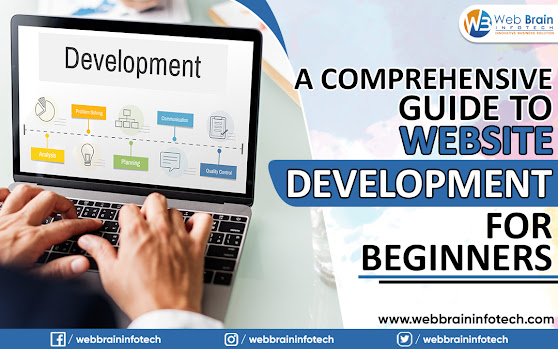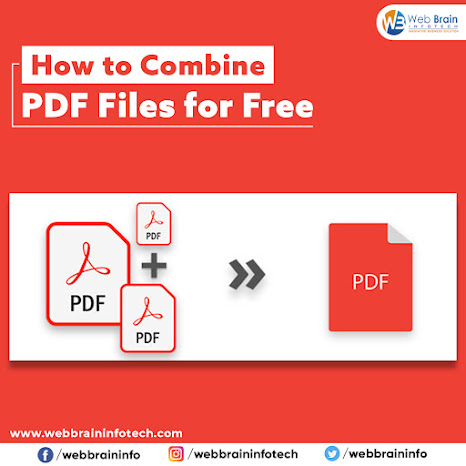A Comprehensive Guide to Website Development for Beginners
Introduction
A
well-designed and properly developed website may be a powerful tool which will
assist you to reach a wider audience, establish credibility, and achieve your
goals. In this blog, we'll walk you through the key concepts and steps involved
in website development.
Whether you would like to showcase your portfolio, start an
ecommerce store, or create a blog, understanding the fundamentals of web
development is important.
Understanding Website Development
Website development encompasses
two main aspects: web design
and web
development. Web design focuses on the visual appearance and user experience
of the website, while web development deals with the technical aspects that
bring the planning to life.
1. Planning Your Website
Before diving into website building, take a while to plan your
website. Define your goals, audience, and therefore the sort of content you
would like to showcase. Consider the layout, color scheme, and overall
aesthetics that align together with your along with your together with your
brand identity and resonate with your audience.
2. Choosing a Platform
One of the primary decisions you'll make in website development is
selecting a platform.
Content
Management Systems (CMS) like WordPress,
Drupal,
or Joomla
are popular choices for beginners thanks to their user-friendly interfaces and
a good range of plugins and themes.
If you favor more control and have web development knowledge,
you'll choose to build an internet site from scratch using HTML, CSS, and
JavaScript.
3. Web Design and User Experience
Web design is crucial to form an enduring impression on your
visitors. Keep the planning clean, intuitive, and visually appealing. Make sure
that the navigation is user-friendly, and therefore the website is aware of
adapting to different devices like smartphones and tablets.
4. Web Development - Front-End
Front-end development involves creating the client side of the
website that users interact with directly. It includes writing HTML, CSS, and
JavaScript code.
HTML provides the structure of the webpage, CSS handles the layout
and style, and JavaScript adds interactivity and functionality.
5. Web Development - Back-End
Back-end development involves building the server side of the
website that supports the front end. This includes creating databases, handling
server requests, and managing user data.
Popular back-end languages and frameworks include PHP, Python
(Django), Ruby (Ruby on Rails), and Node.js.
6. Search Engine Optimization
(SEO)
Optimizing your website for search engines is important to enhance
its visibility and attract organic traffic.
Research keywords associated with your content, and use them
strategically in your website's content, meta tags, and URLs.
Create high-quality and relevant content that gives value to your
audience.
7. Testing Your Website
Before launching your website, thoroughly test it across different
browsers and devices to make sure compatibility and responsiveness. Check for
broken links, loading speed, and any functionality issues. User testing also
can provide valuable feedback on the usability of your website.
8. Website Launch and Maintenance
Once you're satisfied together with your website, it is time to
launch it to the general public. Regularly update your content to stay fresh
and interesting. Monitor website analytics to realize insights into user
behavior and identify areas for improvement.
Regular maintenance will ensure your website stays secure, runs
smoothly, and remains up-to-date.
9. Learning Resources and
Communities
The world of website development is vast and continually evolving.
As a beginner, there are numerous online resources, tutorials, and
communities available to assist you learn and grow.
Join web development forums, participate in coding communities,
and take online courses to reinforce your skills.
Conclusion
In conclusion, website development is an exciting journey that
permits you to unleash your creativity and showcase your ideas to the planet.
Understanding the fundamentals of web design, front-end, and
back-end development will equip you with the knowledge needed to make a
functional and appealing website.
Remember to plan your website carefully, choose the proper
platform, and prioritize user experience.
With dedication and practice, you will be well on your thanks to
becoming a proficient web developer, bringing your website ideas to life
confidently.
Content is originally posted at
https://www.webbraininfotech.com/blog/a-comprehensive-guide-to-website-development-for-beginners/



Indian Website Company (IWC) is your go-to destination for logo development in India, offering competitive pricing and high-quality designs that perfectly capture your brand identity. Our logo development cost in India is budget-friendly, ensuring that businesses of all sizes can access professional logo design services without breaking the bank. In addition to logo design, IWC also provides affordable dynamic website development plans and static website design package cost in India. With our dynamic website development plans, businesses can enjoy feature-rich websites that engage users and drive conversions, while our static website design packages offer a cost-effective solution for establishing an online presence. Contact IWC today to learn more about our logo development services and affordable website development options tailored to your needs.
ReplyDelete